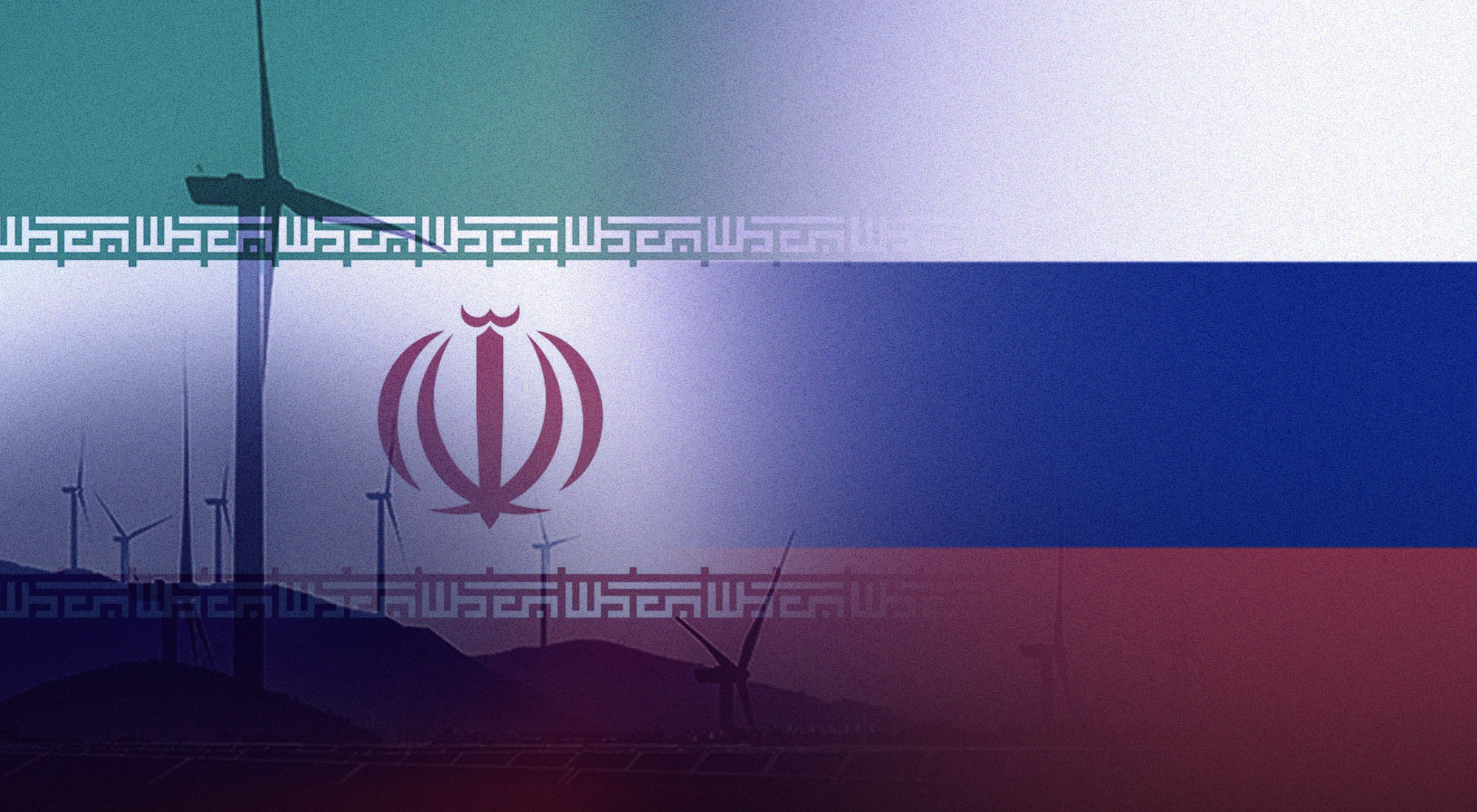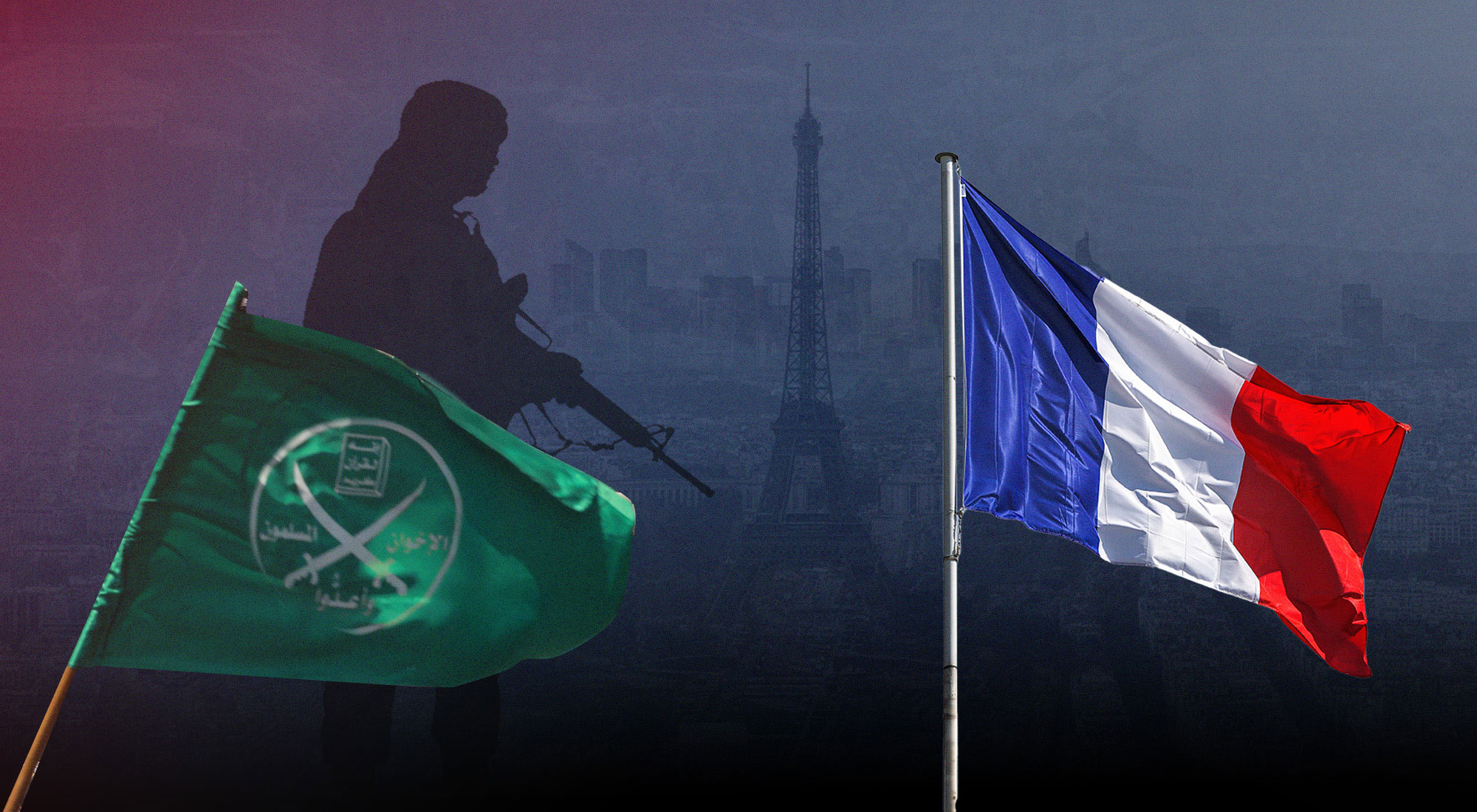Nationwide protests triggered by fresh austerity measures[1] has rocked Lebanon for over a month. Denouncing rampant corruption and sectarian nepotism, protestors are challenging the 30-year reign of Lebanese warlords[2]. These include Hezbollah, which has caused an unprecedented political and security crisis at the national and community levels.
On October 17, when the Lebanese government introduced a $6 monthly tax on WhatsApp calls, it caused huge mobilization across Lebanon. Lebanese people, cutting across geographic, religious and economic divides, called for the stepping down of the entire political class.
The large-scale mobilization across Lebanon can be explained by the population’s discontent with the economic situation and rampant corruption. Constant internal strife, with various factions arguing over state revenue streams, has impeded effective policy-making and necessary reforms.
Lebanon has been facing steady economic downturn in recent years. The country suffers from a huge to debt to GDP ratio, at 151 percent (the third worst in the world)[3], and a massive fiscal deficit at 11%[4] in 2018. The central bank’s gross foreign exchange reserves have dropped to about $31 billion according to the Lebanon This Week economic newsletter[5]. Growth is expected to be close to zero this year, according to economist Ghazi Wazni[6]. Lebanon is ranked 138 in the corrupt countries list of 175, according to Trading Economics[7].
Lebanon is also affected by the gloomy economic situation across the region. More than half a million Lebanese working in the Gulf countries have been instrumental in supporting the economy with their bank transfers. [8] Lebanese expatriates in the Gulf accounted in 2016 for 60 percent of the total remittances to Lebanon, estimated at $ 7.62 billion, according to the International Monetary Fund[9].
According to Wazni, this figure appears to have dropped to less than $5 billion today said. This has had catastrophic implications for the state and has commercial banks’ ability to finance public debt, which amounts to $86 billion.[10]
The decline in transfers and a boom in oil imports suspected to be due to illegal oil transfers to Syria have led to the dollar shortages, with the local currency losing about 30 percent of its value to the US dollar. The liquidity crisis, combined with the protests, has created a panic situation in the banking sector with the fleeing of bank depositors and the closure of Lebanese banks for nearly two continuous weeks[11].
Unemployment is also believed to be at its highest. In 2018, Lebanese President, General Michel Aoun, told the daily English newspaper Daily Star that he believed the unemployment rates have reached 46 percent of the active population[12].
Lebanon is also struggling with dwindling services. Blackouts endure and people are having to buy water from private companies because of scarce supplies. A significant environment degradation caused by recent wildfires has added to the waste crisis that has plagued the country.
The protests pushed Prime Minister Saad Hariri to resign on October 29[13]. Hariri’s resignation destroyed the tripartite alliance –attaching Hezbollah to Hariri and president’s Michel Aoun’s Christian Free Patriotic Movement. This was followed by the militant group being put under heavy American sanctions[14]. (NOT CLEAR, were sanctions imposed after Hariri resignation?)
The tripartite debacle underscores the limitation of the Lebanese political quota system as well as of Hezbollah and by extension Iran’s regional proxy system. The Lebanese are increasingly convinced that the Lebanon’s institutions, based on a distribution of the public and political functions between Muslims and Christians, contributes to nepotismand a growing feeling of deprivation. A small circle of Lebanese elites monopolizes the country’s wealth, with 0.7 percent of the Lebanese population owning 55 percent of total Lebanese deposits, according to figures provided by economist Kamal Hamdan.
Shiite areas, more specifically in the Bekaa valley, are among the poorest regions. Deprivation has united Lebanese in their grievances, with communities, including Hezbollah’s popular base, slowly identifying with their nation at the expense of their tribal and religious leaders. The Shiite street has thus joined the national movement. In mid-October, people protested in front of the house of Hezbollah MP Hasssan Fadlallah, and ransacked the offices of another Hezbollah member, MP Mohamad Raad.
For the first time in Lebanon’s history, Hezbollah appears at a loss. Until now, Iran had astutely exploited sectarian rivalries plaguing Lebanon’s political system. Hezbollah used to successfully lock down its community, by uniting efforts with speaker of the House Nabih Berry’s Amal party. Hezbollah also relied on its entente with President Aoun to hijack the country’s military and foreign matters, seen as vital by the organization.
This marriage of convenience, which consecrated Hezbollah’s clout over the system, has ironically rendered the militant group hostage of its alliances. Today, in no way can it challenge its allies’ economic vision (or lack thereof) and corrupt practices.
Hezbollah has also done very little to crack down on the corruption of its commanders[15], or develop a state-led socio-economic vision of its own. The militant group has so far relied essentially on its network of social organizations such as its Martyrs’ Foundation (providing financial assistance health and social support to the families of those killed in combat), or its Foundation for the Wounded and its health unit, operating hospitals and health centers among many others. [16] However with the decline of Iranian support, Hezbollah has found itself with a failing communal and national system, which appears to be now backfiring on them.
To contain the threat posed by the protests, the militant group appears to have adopted a trilateral approach: negotiation with the government, communal containment and crackdown as well as escalating indirect repression.
Talks among Lebanon’s political parties to agree on a new government are still deadlocked, as Hezbollah indicated it would not be forced into concessions[17]. Hariri, who favors a technocratic government, heeding to protestors’ demands has announced he will not lead the next government. Hezbollah, followed by Amal and the Free Patriotic Movement, wants a government constituting technocrats and politicians, as it worries that a technocrat government could question its monopoly on arms.
The militant group has thus focused on conspiracy narratives and a crackdown to quell demonstrations. Hassan Nasrallah, the leader of Hezbollah, has responded to the protests with several televised interventions. Nasrallah emphasized that the presidency of his Christian ally President Michel Aoun was to remain unobstructed and that the government would not fall. Nasrallah also threatened that if other political parties tried to take advantage of the unrest, his group would display the full extent of its power on the streets.
Hezbollah has so far been able to partly divert the people’s ire by promoting conspiracy theories and victimization narratives[18]. Nasrallah accused the protest movement of “being led by known parties and political forces and some sides are funding it,”. In a televised address[19] he cautioned the group’s supporters to leave the protest squares.
Hezbollah and its ally Amal have resorted to a counter mobilization movement of its popular base, resulting in increased intra-Shiite and intra-communal violence. Amal has been accused of sending its militants to beat up demonstrators in South Lebanon cities, more specifically in Nabatieh[20]. In the Bekaa valley, a Hezbollah bastion, pro-Hezbollah militants beat up protestors.[21] A recent LBCI report showed that people who denounced the ill-treatment by Hezbollah and Amal were kidnapped and beaten and were forced to recant their statements in video messages circulated on WhatsApp groups[22].
On October 29, hundreds of Lebanese supporters accused of belonging to Hezbollah and Amal attacked a protest camp set up by anti-government demonstrators in Beirut, beating up protestors with sticks. Protests have also increasingly taken a sectarian turn with pro-Hezbollah and Amal militants attacking Christian areas considered as former demarcation, such as Monot and Ain Remaneh.
The escalation is likely to continue as Hezbollah finds itself in an increasingly difficult situation. It is also unlikely that Hezbollah will remain silent to the challenge posed by the protests and this could lead to large-scale security incidents, at the Israeli border in the form of assassinations, orchestrated sectarian incidents or “terror” attacks. Covert action against leading figures in the civil society or opposition groups could also be undertaken by the militant organization.
Hezbollah is possibly facing its biggest threat since 2005, when the March 14 movement pushed local protector, Syria, to withdraw from Lebanon, and attempted to dismantle the group’s telecommunication network[23]. Today, the danger is even more acute for the organization, as protestors’ grievances, unlike in 2005, are economic and not ideological. It has also reached the various segments of the Lebanese society, and is testing Hezbollah’s direct political allies.
Nasrallah has so far failed to respond to people’s grievances[24], preferring instead to blame the United States for Lebanon’s increasingly dire situation. Yet, leveling accusations alone will not solve Hezbollah’s problems, as the financial crisis and the political class’s disconnect will probably keep fueling the movement’s momentum and call for the demand for transparent efficient political leadership.
It is unlikely that Hezbollah can respond to such expectations, as the organization remains a prisoner of its alliances. As previously observed, Hezbollah requires unstinted support of the Shiite speaker of the house, Nabih Berri. The Christian Free Patriotic Movement (FPM) has also ignored? the movement to avoid accusations of monopolizing an unconstitutional and a sectarian-ridden Lebanese system., Hezbollah, on the other hand, is not in a position to let go of these partnerships.
So far, protestors have not demanded a review of Hezbollah’s exceptional situation, focusing instead on the fight against corruption and the improvement of public finances. Yet, Hezbollah’s alliances with figures accused of corruption, and its loyalty to a foreign country’s whose interests often hurt Lebanon’s, puts it indirectly in opposition with popular demands.
Hezbollah has used the weakness, corruption and nepotism of its political cronies to obtain their tacit handover of the country’s foreign relations and defense affairs. It is thus part, if not an instrumental building block, of the Lebanese system that is now upending.
[1] Collard, Rebecca, “How Lebanon Protesters Responded to Prime Minister Resigning | Time,” October 30, 2019, https://time.com/5713759/lebanon-prime-minister-resigns-protests/.
[2] Hassan Krayem, “THE LEBANESE CIVIL WAR AND THE TAIF AGREEMENT,” accessed March 13, 2019, https://www.academia.edu/28597258/THE_LEBANESE_CIVIL_WAR_AND_THE_TAIF_AGREEMENT.
[3] Trading Economics, “Lebanon Government Debt to GDP | 2019 | Data | Chart | Calendar | Forecast,” accessed November 6, 2019, https://tradingeconomics.com/lebanon/government-debt-to-gdp.
[4] Nakhour, Shikrallah, “Fiscal Deficit Widens 66 Percent,” BusinessNews.com.lb, June 26, 2019, http://www.businessnews.com.lb/cms/Story/StoryDetails/7185/Fiscal-deficit-widens-66-percent.
[5] file:///C:/Users/VAIO/Downloads/LTW-604.pdf
[6] Interview by Mona Alami, with Ghazi Wazni, October 2019, Beirut, Lebanon
[7] Trading Economics, “Lebanon Corruption Rank | 2019 | Data | Chart | Calendar | Forecast | News,” accessed November 4, 2019, https://tradingeconomics.com/lebanon/corruption-rank.
[8] Hajje-Boutros, Phillipe, “Les Armes Économiques Des Pays Du Golfe Contre Le Liban – Philippe HAGE BOUTROS – L’Orient-Le Jour,” November 11, 2017, https://www.lorientlejour.com/article/1083459/les-armes-economiques-des-pays-du-golfe-contre-le-liban.html.
[9] Hajje-Boutros, Phillipe.
[10] https://blog.blominvestbank.com/29327/gross-public-debt-in-lebanon-hit-85-32b-in-january-2019/
[11] https://www.voanews.com/middle-east/lebanese-banks-close-two-extra-days-amid-financial-turmoil
[12] The Daily Star, “Jobless Rate at 46 Pct, President Warns | Business , Local | THE DAILY STAR,” March 30, 2018, https://www.dailystar.com.lb/Business/Local/2018/Mar-30/443613-jobless-rate-at-46-pct-president-warns.ashx.
[13] PM Hariri announces Resignation, October 29, Naharnet, https://en.annahar.com/article/1058445-prime-minister-saad-hariri-announces-resignation
[14] https://apnews.com/a37836f1f39f40028710c2ad226a7760
[15] Hezbollah’s International Financing Operation: From Economic Resistance to Criminal Endeavor, Omran Dirasat,
[16] Hezbollah’s Social Jihad: Nonprofits as Resistance Organizations, Shawn Teresa Flanigan, Mounah Abdel-Samar, MEPC. https://mepc.org/hezbollahs-social-jihad-nonprofits-resistance-organizations
[17] Lebanon: Cabinet Talks in Stalemate as Hezbollah Rejects Being Forced Into Concessions, November 10, Ashark Awsat, https://aawsat.com/english/home/article/1985341/lebanon-cabinet-talks-stalemate-hezbollah-rejects-being-forced-concessions
[18] Caroline HAYEK, “Ceux qui voient un complot derrière la révolte libanaise – Caroline HAYEK,” L’Orient-Le Jour, November 4, 2019, https://www.lorientlejour.com/article/1193799/ceux-qui-voient-un-complot-derriere-la-revolte-libanaise.html.
[19] Naharnet and 16:04, “Nasrallah Warns of Civil War, Asks Hizbullah to ‘Leave Squares’ and Protesters to Pick Representatives,” Naharnet, October 25, 2019, http://www.naharnet.com/stories/en/265904.
[20] the Daily Star, “At Least 15 Protesters Injured in Nabatieh Scuffles | News , Lebanon News,” October 23, 2019, https://www.dailystar.com.lb/News/Lebanon-News/2019/Oct-23/494170-at-least-15-protesters-injured-in-attack.ashx.
[21]Heurts entre des manifestants et partisans du Hezbollah à Fekha, dans la Békaa, 25 October 2019, Orient Le Jour, https://www.lorientlejour.com/article/1192640/heurts-entre-des-manifestants-et-partisans-du-hezbollah-a-fekha-dans-la-bekaa.html
[22] https://www.jesrpress.com/2019/10/22/%D9%85%D8%AA%D8%B8%D8%A7%D9%87%D8%B1-%D9%84%D8%A8%D9%86%D8%A7%D9%86%D9%8A-%D8%B4%D8%AA%D9%85-%D9%86%D8%A7%D8%A6%D8%A8%D8%A7%D9%8B-%D8%B9%D9%86-%D8%AD%D8%B2%D8%A8-%D8%A7%D9%84%D9%84%D9%87-%D9%84%D9%8A/
[23] https://www.reuters.com/article/us-lebanon-strike/lebanon-political-conflict-turns-violent-idUSL0761005520080507
[24] Hassan Nasrallah: Corruption investigators should ‘start with us, by Timour Azhari, November 11, 2019 https://www.aljazeera.com/news/2019/11/hasan-nasrallah-corruption-investigations-start-191111170737535.html








